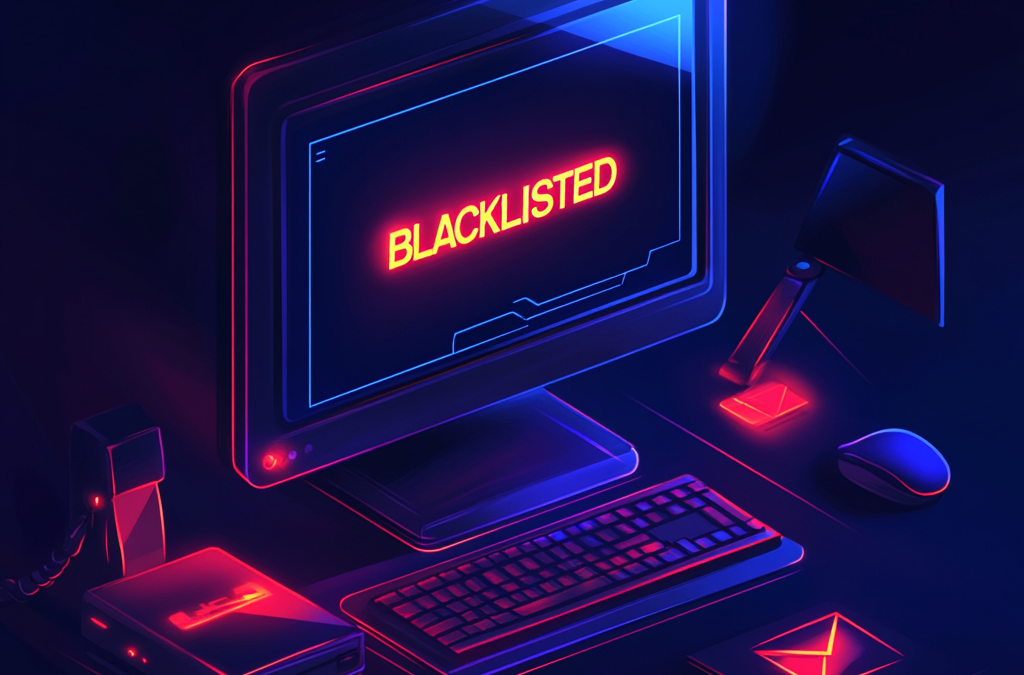In the digital age, your online presence is your most valuable asset. But there’s a hidden threat lurking in the shadows, ready to tarnish your reputation and cripple your operations. This menace is real, and it’s called blacklisting. That’s why we’ll be talking about blacklist monitoring and recovery so it doesn’t become a serious problem for your business.
What’s Blacklisting?
Blacklisting is a silent killer. When search engines or other online platforms flag your website as harmful or spammy, you could see a significant drop in traffic or, worse, be completely removed from search results. There are different types of blacklisting:
1. IP Blacklisting: Your IP address is flagged for sending spam emails or hosting malicious content. This can lead to email servers, ISPs, and other networks blocking your IP, causing major disruptions in your communication channels.
2. Domain Blacklisting: Your entire domain is blacklisted due to suspicious activity or security breaches. This means your website could be completely removed from search engine results, causing a significant drop in traffic and potentially devastating your online presence.
3. URL Blacklisting: Specific URLs on your website are flagged for containing harmful content or phishing attempts. This can result in those particular pages being blocked, impacting the user experience and damaging your site’s credibility.
Scary, huh? That’s why you need to be vigilant and well-informed about potential pitfalls. The most common reasons for being blacklisted include sending spam emails, having malware or viruses on your site, hosting phishing scams, or engaging in dubious SEO practices. Even a single security lapse can lead to blacklisting, impacting your website’s visibility and credibility. For instance, if your website gets hacked and used to send spam, or if it unknowingly hosts malware, search engines and ISPs will act quickly to protect users, often without warning you first.
Check if You’ve Been Blacklisted
Blacklist monitoring is like a routine health check for your website. Start by identifying the IP addresses or domains you need to monitor. These are checked against various blacklists, which list IP addresses or domains reported for spam or malicious activities. If your IP or domain shows up on a blacklist, it means it’s been marked as a source of spam or malicious activities. This can lead to your IP or domain being blocked by email servers, ISPs, and other networks, disrupting communication and access to services.
Are You Officially Blacklisted?
Uff… We’re sorry. Being blacklisted can feel like a disaster, but it’s not the end of the world. Here’s your recovery plan:
1. Understand the Situation: Know what being blacklisted means—typically involvement in spam or malicious activities. This could be due to unpaid debts, fraudulent activities, or a bad credit history. The first step is to understand the cause of the blacklisting and the specific issues that led to it.
2. Identify the Blacklisting Entity: Determine who blacklisted you—could be a search engine, an ISP, or a security organization. Knowing the entity responsible for the blacklisting will help you address the issue more effectively.
3. Request Information: Contact the blacklisting entity to find out why you were blacklisted. Request detailed information about the specific incidents or behaviors that led to the blacklisting. This will help you understand the root cause and take appropriate action.
4. Check for Errors: Look for and dispute any errors in the blacklist report. Sometimes, blacklisting can occur due to errors or mistaken identity. If you find any inaccuracies, dispute them immediately and provide evidence to support your claim.
5. Resolve Issues: Address the underlying cause, whether it’s malware, spam, or a security breach. Fix the problem that led to the blacklisting, such as removing malware from your site, stopping spam emails, or securing your site against phishing attacks.
6. Request Removal: Once resolved, request removal from the blacklist, providing evidence of the fix. Contact the organization managing the blacklist and provide them with evidence that the issue has been resolved. Request removal from the blacklist and follow their guidelines for the process.
7. Monitor Your Status: Keep an eye on your blacklist status to ensure removal. After requesting removal, monitor your blacklist status to ensure that your site or IP has been removed from the blacklist. Use the same tools that identified the blacklist to confirm your removal.
8. Prevent Future Incidents: Implement strong security measures, monitor for suspicious activity, and regularly check your blacklist status. To prevent future blacklisting, take steps to improve your website’s security, monitor for suspicious activity, and regularly check your blacklist status. This will help you stay ahead of potential threats and maintain a healthy online presence.
Prevention is Better Than Cure
While monitoring and recovery are crucial, the best strategy is to avoid blacklisting altogether. Maintain good website hygiene: regularly update your site, use strong passwords, and steer clear of spammy practices.
Remember, your online reputation is your most valuable asset. Protect it fiercely and keep your website off those blacklists!

